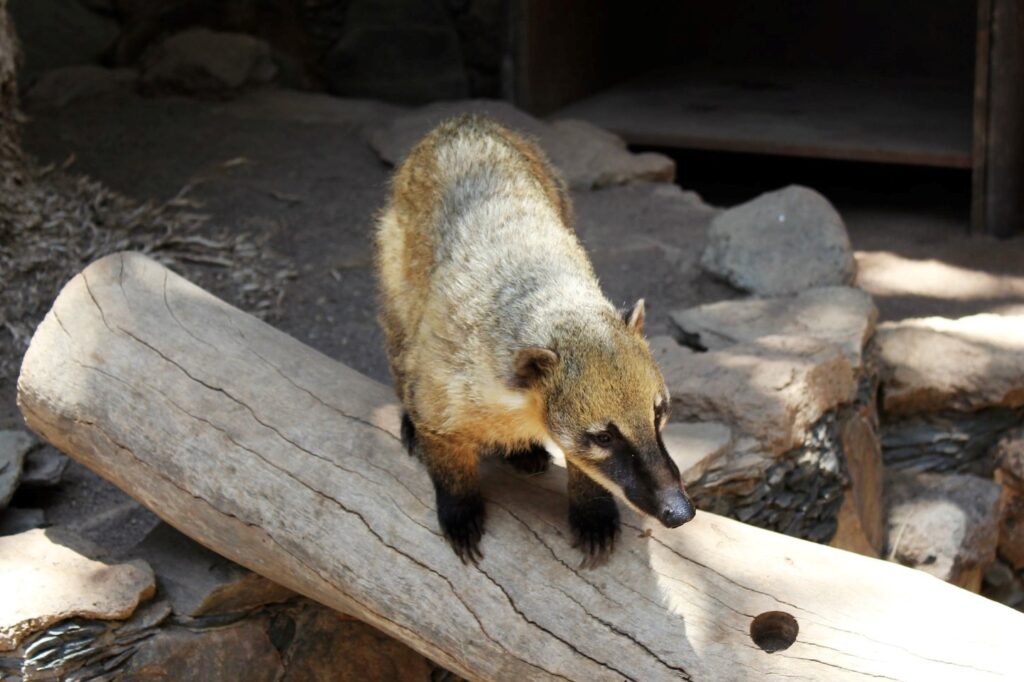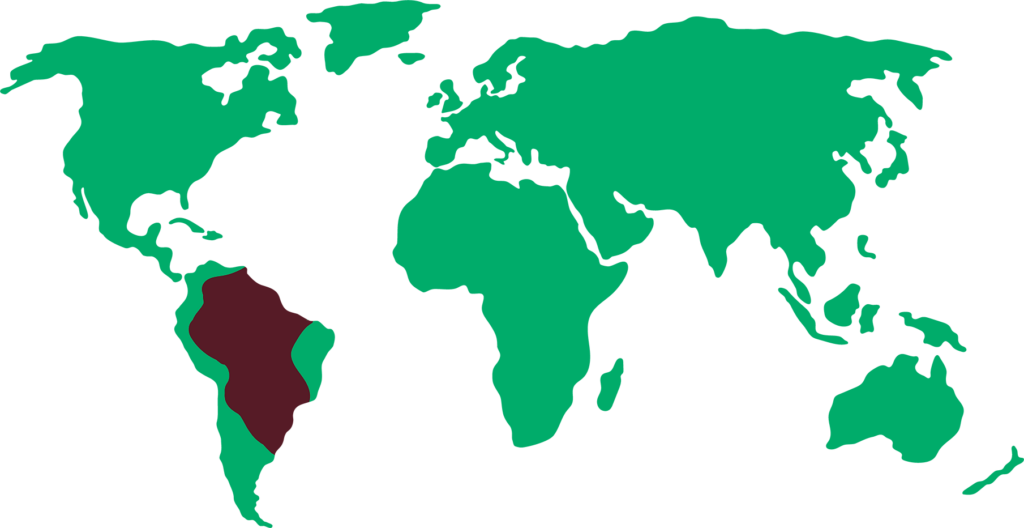SOUTH AMERICAN COATI
Nasua nasua

LENGTH

67 cm
WEIGHT

8 kg
LIFESPAN

15 years
The coati is a climbing mammal of the family Procyonidae, a group of animals from South America that includes kinkajous, ringtails, olingos and raccoons. The family resemblance appears strongest between coatis and raccoons, but coatis have a longer nose, body and tail rather than raccoons.
General characteristics
The coati’s fur is usually of a light or dark brown color with white rings on the tail. The tail is long but not prehensile and is used to maintain balance.
Its black snout is elongated and flexible. The legs are also black, with longer and more curved claws on the front legs than on the hind legs. Both the claws and the ears, which are round and small, are very similar to those of a bear.
Its joints are very flexible, allowing it to bend the ankles when climbing down from trees.
Males are almost twice the size of females and they both have long and sharp canine teeth.
Feeding
Mainly consists of fruits, insects, soil invertebrates, small vertebrates (lizards, rodents, etc.) and bird eggs.
Behaviour
In the wild, they live in bands of up to 20 individuals composed of females and baby coatis. Males usually have solitary social habits.
Coatis sleep in trees and go down to the ground to forage among leaves or under the rocks. There is always a watcher who keeps an eye on everything. If theres any danger, it emits an alarm sound similar to a dog’s bark to warn the rest of the band, which disperses by hiding in the bushes or in the treetops.
They are very noisy when moving in bands and they communicate with each other by grunting, squeaking and snorting.
Reproduction
It occurs usually during the rainy season, when there is abundant food. Males live in solitary and they only join the band during this time of the year. Once pregnant, the females leave the group to give birth in a nest built in trees. The gestation period lasts approximately 74 days , in which 2 to 7 offsprings are born.
During the first two months, offsprings are cared by the mother. After this time, the mother takes them back to the band where all the females participate in the rearing.
Threats
The greatest threat to coatis is the degradation of their habitat.
Distribution
They live in dry or humid woods and scrubland of central South America.

Did you know?
Coatis are good climbers and swimmers.
They are very curious animals. Sometimes they approach urban areas to steal things.
The word coati comes from the Tupi-Guarani language and it literally means long nose.
Conservation status
